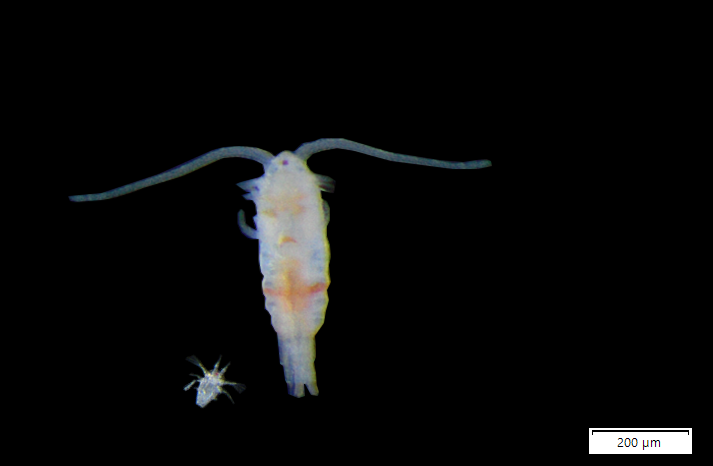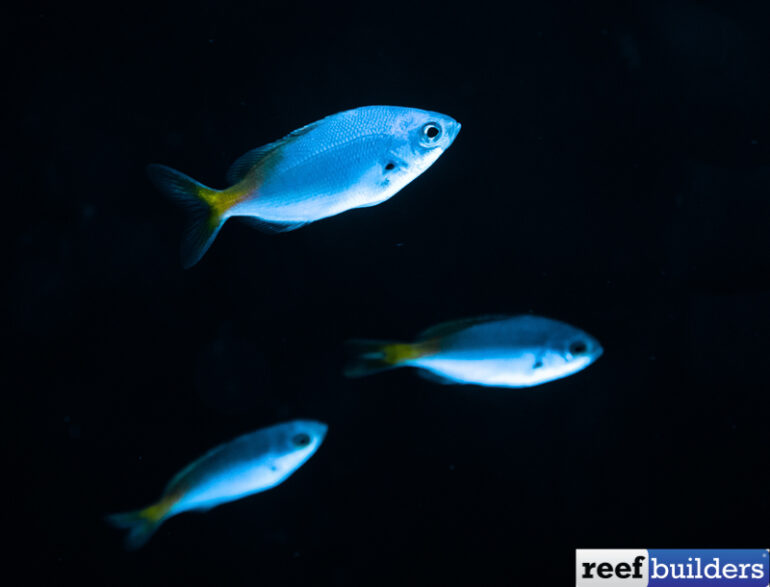It’s a first for the genus, NAUSICAA Aquarium in France managed to successfully breed and raise Caesio cuning, also known as the redbelly yellowtail fusilier. These results are obtained in the framework of the long-term research project COPEFISH involving NAUSICAA (National Sea Centre, Boulogne sur Mer, France) and a research team from the University of Lille.
The aquaculture project is aiming to increase the knowledge in marine fish breeding and fill the gap between larval development and nutrition. Researchers from the University of Lille working on this project are hosted by NAUSICAA in a research infrastructure allowing the mass production of various species of phytoplankton and zooplankton as well as fish larval breeding.
Typically, a dozen of copepod species which are essential for larval development are consistently kept in large volumes. Furthermore, researcher teams have the skills required to successfully breed ornamental fishes. Broodstock preparation and egg collection were carried out by NAUSICAA aquarist team.
A group of 14 adult Caesio cuning collected in Indonesia when 2cm long in 2006, were kept in a 400,000 liter aquarium (L15, W12, H2,5 meters) with around 1000 other coral reef animals. Natural daylight represents 90% of light received. Adult fish are fed with 80% of thawed seafood and green vegetables, and 20% pellets. Spawning was observed from May to August 2020, shortly after dusk. Eggs were collected with a plankton net.

After collection, fertilized eggs were transferred to hatching tanks operated by University de Lille, and incubated for 3 days at 25°C and 35 PSU. Larvae were fed first with naupliar stages of 3 copepod species smaller than 63 µm thorough the early stages. At 15 dph the larvae were able to catch rotifers (S-Strain) and larger developmental stages of copepods (<150 um) whereas they accepted fresh newly hatched Artemia (AF-Strain) after 30 dph. Flexion occurred nearly 13 dph as well as a high mortality event sometimes reaching 90%.
Metamorphosis slowly started at 60 dph and fish reached the juvenile stages as early as 75 dph when they showed typical adults features such as colors and schooling behaviour. Amongst the copepods successfully used, nauplii of Parvocalanus crassirostris (adult and nauplius shown on picture © Emilien Deposé–Franck Pericat–Université de Lille).
Caesio cuning is a tropical marine species heavily fished both for food and pet trade. In certain areas overfishing is observed. Captive breeding, today at its early stages, including copepod production, could provide pet trade industry with animals and so decrease pressure on wild stock.



